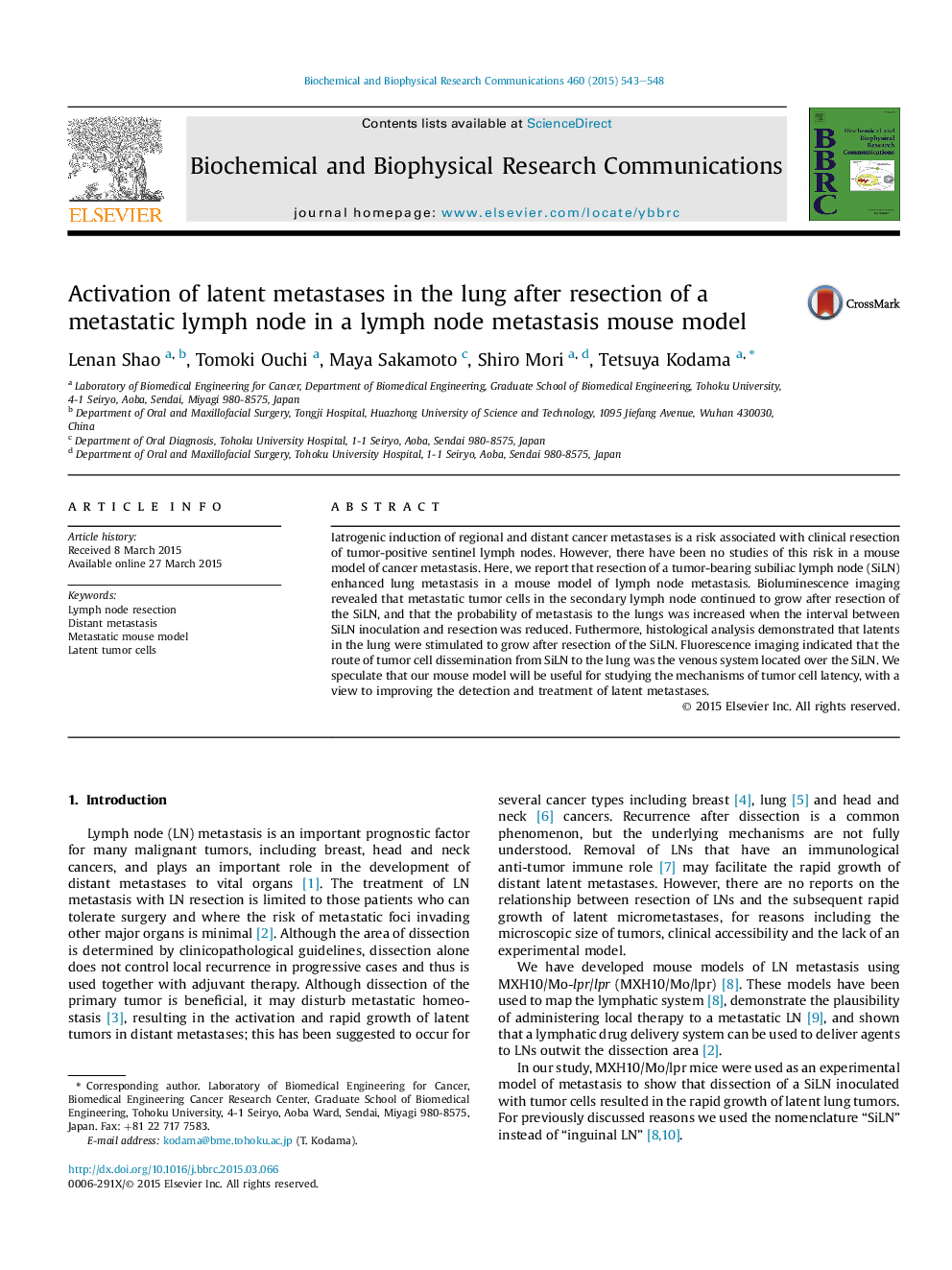| Article ID | Journal | Published Year | Pages | File Type |
|---|---|---|---|---|
| 10751987 | Biochemical and Biophysical Research Communications | 2015 | 6 Pages |
Abstract
Iatrogenic induction of regional and distant cancer metastases is a risk associated with clinical resection of tumor-positive sentinel lymph nodes. However, there have been no studies of this risk in a mouse model of cancer metastasis. Here, we report that resection of a tumor-bearing subiliac lymph node (SiLN) enhanced lung metastasis in a mouse model of lymph node metastasis. Bioluminescence imaging revealed that metastatic tumor cells in the secondary lymph node continued to grow after resection of the SiLN, and that the probability of metastasis to the lungs was increased when the interval between SiLN inoculation and resection was reduced. Futhermore, histological analysis demonstrated that latents in the lung were stimulated to grow after resection of the SiLN. Fluorescence imaging indicated that the route of tumor cell dissemination from SiLN to the lung was the venous system located over the SiLN. We speculate that our mouse model will be useful for studying the mechanisms of tumor cell latency, with a view to improving the detection and treatment of latent metastases.
Related Topics
Life Sciences
Biochemistry, Genetics and Molecular Biology
Biochemistry
Authors
Lenan Shao, Tomoki Ouchi, Maya Sakamoto, Shiro Mori, Tetsuya Kodama,
